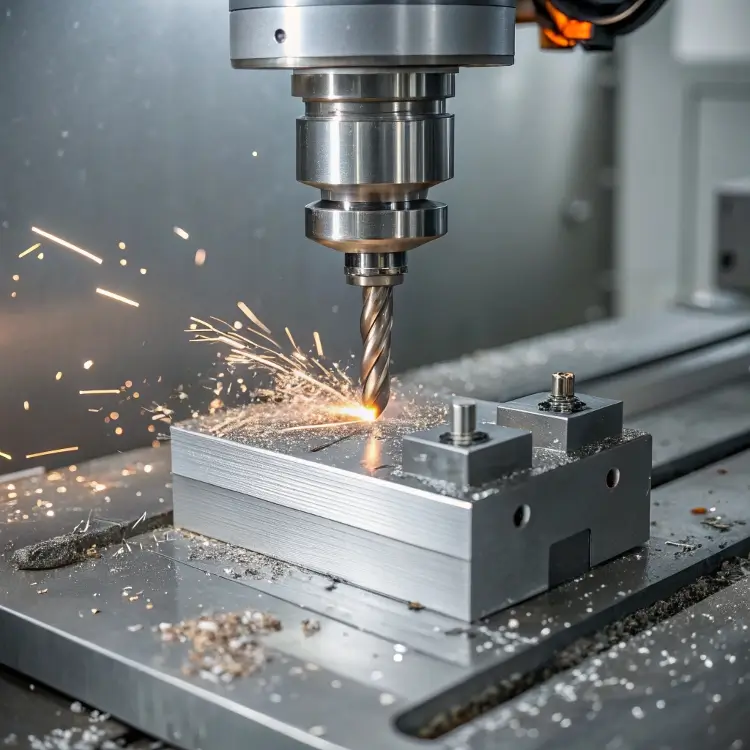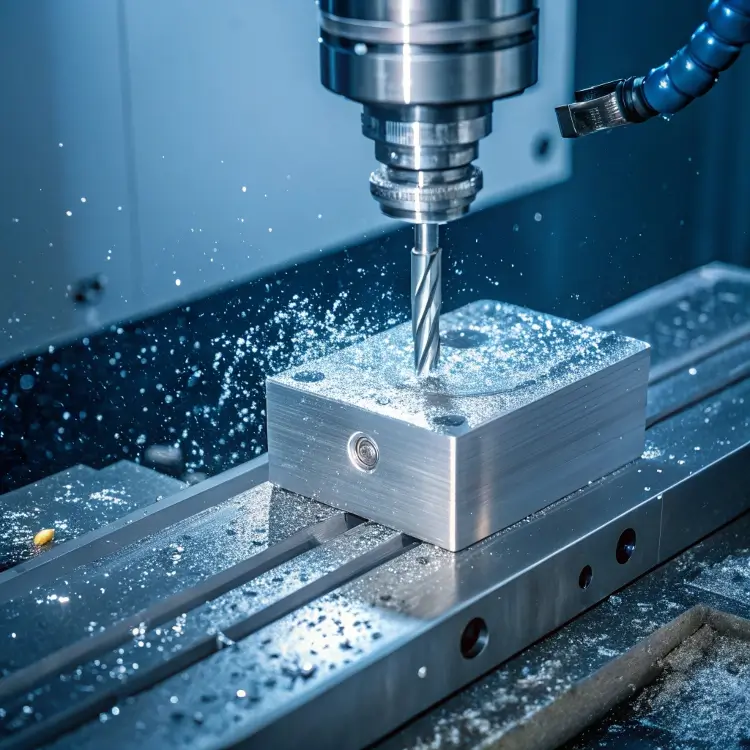What is 6061-T6 aluminum CNC machining?

If you’re working on custom parts, CNC machining with 6061-T6 aluminum might be your go-to solution—but is it really the best option for precision and performance?
6061-T6 aluminum CNC machining refers to using CNC tools to mill, turn, or drill parts made from heat-treated 6061 aluminum alloy, known for its balance of strength, weight, and machinability.
Many engineers and procurement officers prefer this grade because it works across multiple industries. Let me walk you through why.
Is 6061-T6 aluminum machinable?
Problems often arise when materials are too soft, too brittle, or generate too much heat during cutting. That’s why machinability matters so much.
Yes, 6061-T6 aluminum1 is highly machinable. It offers a good balance of strength and ease of cutting, making it a top choice for CNC machining2.

6061-T6 is one of the most commonly used aluminum grades in CNC shops. The "T6" means it has been solution heat-treated and artificially aged to reach maximum strength. Even so, it still cuts cleanly. I’ve had many customers choose 6061-T6 specifically because it doesn’t clog the tool easily and holds tight tolerances.
Why machinability matters
Machinability affects surface finish, tool wear, and lead times. In our shop, we typically use standard carbide tools when working with 6061-T6, and we rarely encounter tool chipping unless the geometry is especially complex. Here’s a quick look:
| Property | 6061-T6 Aluminum |
|---|---|
| Brinell Hardness | 95 |
| Ultimate Tensile Strength | ~310 MPa |
| Yield Strength | ~276 MPa |
| Machinability Rating | 90% (compared to B1112 steel) |
This high machinability means fewer tool changes, cleaner edges, and faster cycles. Whether it’s a one-off prototype or a 1,000-piece order, 6061-T6 performs predictably.
Is 6061-T6 easy to machine?
You might be wondering whether this grade is forgiving for complex or tight-tolerance jobs.
Yes, 6061-T6 aluminum is one of the easiest aluminum alloys to machine thanks to its excellent chip formation, low tool wear, and stable structure.

When I started out, I tested several aluminum grades—5052, 7075, and 6061-T6. What impressed me about 6061-T6 was how smoothly it runs on both three-axis and five-axis machines. It cuts evenly, chips well, and doesn’t warp during long runs.
A closer look at tool performance3
Good machinability4 doesn’t just make my life easier—it helps customers save time and cost. Here’s why:
| Factor | Impact with 6061-T6 |
|---|---|
| Tool Life | Long—less frequent changes |
| Surface Finish | Smooth—requires minimal post-processing |
| Chip Formation | Consistent—reduces clogging |
| Thermal Conductivity | High—reduces risk of warping |
These factors also reduce the risk of poor part consistency. That’s especially important for our clients in robotics and medical industries where every micron matters.
What is the cutting speed of 6061-T6 aluminum?
If you’re programming a CNC machine, getting your speeds right is key. Go too fast and you risk tool wear; too slow and you lose efficiency.
The recommended cutting speed for 6061-T6 aluminum5 is typically between 250–500 surface feet per minute (SFM), depending on the tool and operation.

In our shop, for example, we often run 1/2" carbide end mills at 10,000–14,000 RPM with a feed rate of 40–60 inches per minute, depending on the part geometry. If we’re roughing, we go slower but deeper. For finishing passes, we bump up the speed for a cleaner cut.
General parameters for CNC milling 6061-T6:
| Tool Type | Diameter | RPM Range | Feed Rate |
|---|---|---|---|
| Carbide End Mill | 6 mm | 10,000–12,000 | 600–800 mm/min |
| Carbide Drill | 3 mm | 8,000–10,000 | 400–500 mm/min |
Of course, tool coating and machine rigidity6 also affect these numbers. We always recommend starting with conservative values and adjusting based on chip load and machine behavior.
What is the best aluminum for CNC machining?
Every project is different. Some need strength. Others need weight savings or corrosion resistance.
6061-T6 is one of the best all-around aluminum alloys for CNC machining, offering a solid mix of machinability, strength, and affordability.

While 6061-T67 is widely used, here’s how it stacks up against other popular grades:
Comparison Table: Popular Aluminum Alloys for CNC
| Alloy | Strength | Machinability | Corrosion Resistance | Cost | Common Use Case |
|---|---|---|---|---|---|
| 6061-T6 | Medium | High | Good | Moderate | General engineering, electronics |
| 7075-T6 | High | Medium | Fair | High | Aerospace, high-load parts |
| 5052 | Low | Medium | Excellent | Low | Enclosures, sheet metal parts |
If strength is your top concern, 7075-T6 is a better fit, though it’s more expensive and harder to machine. If corrosion resistance in salty or humid environments matters, 50528 might win—but it’s softer. Most of our customers choose 6061-T6 for its great balance.
Conclusion
6061-T6 aluminum is easy to machine, performs consistently, and suits many industries—it’s our go-to for custom aluminum CNC parts.
-
Explore this link to understand the unique properties and benefits of 6061-T6 aluminum in machining applications. ↩
-
Discover how CNC machining enhances the efficiency and precision of working with 6061-T6 aluminum. ↩
-
Discover how tool performance impacts the machining process and efficiency, especially with aluminum alloys like 6061-T6. ↩
-
Learn about the machinability of various aluminum alloys, including 6061-T6, to make informed decisions for your projects. ↩
-
Understanding the cutting speed for 6061-T6 aluminum is crucial for optimizing machining processes and tool longevity. ↩
-
Learning about tool coating and machine rigidity can help you make informed decisions for better machining outcomes. ↩
-
Explore the advantages of 6061-T6 aluminum, a top choice for CNC machining, known for its strength and machinability. ↩
-
Discover the unique properties of 5052 aluminum, especially its excellent corrosion resistance for specific applications. ↩



